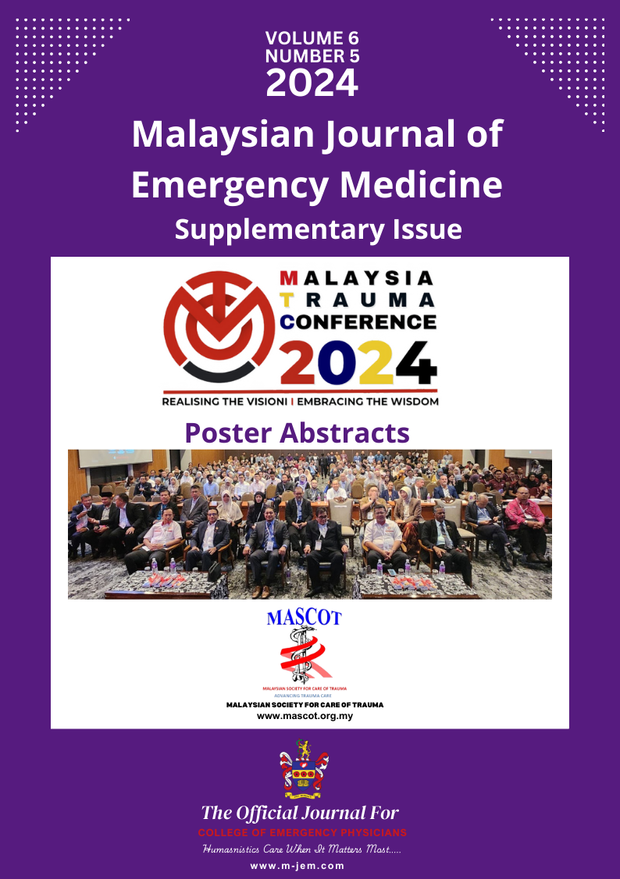A17 Whole-Body CT Scans in Obese Polytrauma Patients
Main Article Content
Abstract
INTRODUCTION
This case underscores the complexities involved in diagnosing abdominal injuries following blunt trauma, especially when initial assessments and imaging yield inconclusive or falsely reassuring. Clinicians should contemplate prolonging observation periods for trauma patients, even in the absence of initial signs pointing to severe injury. This proactive approach may improve the early detection of delayed complications, ultimately optimizing patient outcomes and diminishing the risk of post-discharge complications.
CASE DESCRIPTION
A 47-year-old man with hypertension and a BMI of 39.2 was involved in a motor vehicle accident between a car and a lorry. Then, the patient was brought to the ED. Initial management was done, and bedside x-rays and EFAST were performed with limited visualization. Hence, a further radiological exam was needed. Despite emergency medical interventions, the patient experienced two cardiac arrests while in the CT suite and was pronounced deceased there. He suffered multiple bilateral rib fractures with hemothorax, a third thoracic vertebral fracture, severe traumatic brain injury and intra-abdominal bleed.
DISCUSSION
WBCT scans have been proven to offer superior imaging with high sensitivity and specificity to detect injuries compared to other radiological modalities. Studies have consistently demonstrated that integrating WBCT into early trauma care, significantly increased the probability of survival in patients with polytrauma Although the radiation risk remains a topic of debate, WBCT is far superior when investigating the obese population. WBCT offers several benefits for investigating polytrauma patients, including comprehensive coverage, detailed imaging, rapid scanning, and high diagnostic confidence. While X-rays have their place in initial assessments and specific contexts, WBCT is the gold standard for a thorough and accurate evaluation of polytrauma patients. Additionally, WBCT reduces the risk of imaging complications, such as excessive manipulation of limbs during X-rays.
CONCLUSION
Hospitals equipped with CT scans should consider implementing WBCT for polytrauma patients, especially obese populations. WBCT is sensitive in detecting intra-abdominal injuries, spinal injuries, and pelvic bone fractures, which are sometimes difficult to identify with X-ray or EFAST in obese patients.
Metrics
Article Details

This work is licensed under a Creative Commons Attribution-NonCommercial 4.0 International License.

